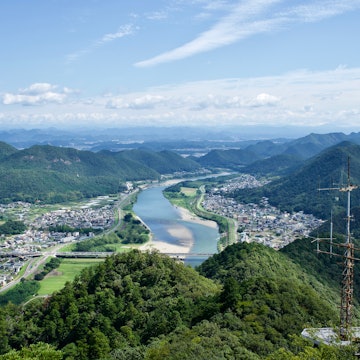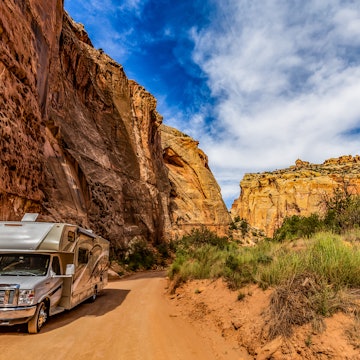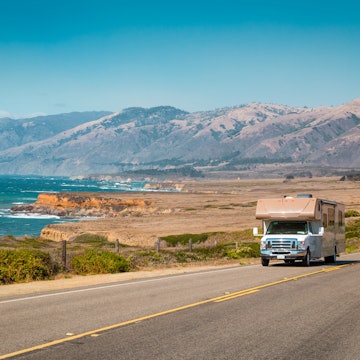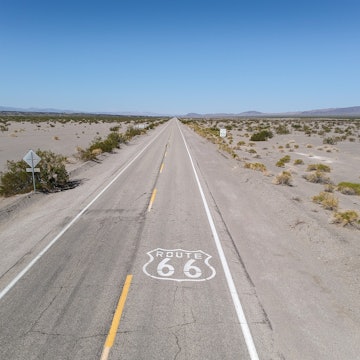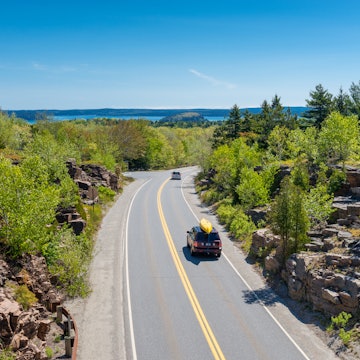

Fire up the jet pack, suck in some thin air, get a taste of zero g – it’s time to take one small step for yourself, and a giant leap for humanity. Here are 11 destinations related to space travel, whether you'd rather observe from the ground or head up there yourself.
1. Palomar Observatory, USA

High on Palomar Mountain, at an elevation of 1800m to avoid light pollution, the Palomar Observatory in San Diego is simply spectacular – as large as Rome’s Pantheon. It’s almost as beautiful as the Pantheon, too, with a classic design dating from the 1930s. The Observatory houses the world’s once-largest telescope, the 5.1m Hale Telescope, operated chiefly by computers now rather than humans. These days the observatory is chiefly used to track near-earth asteroids and is open to the public daily.
2. Kennedy Space Center, USA

Located on the famous Cape Canaveral in Florida, this is the granddaddy of all space facilities, the launch pad for the Mercury, Gemini and Apollo programmes, as well as the various space shuttles. Remember masses of spectators gleefully cheering on astronauts ascending to the heavens; the Challenger shuttle falling to the sky to the horror of those watching…that’s all Kennedy. You too can witness history: select a launch date and park beside the highway a few miles away for free views. Or pay to get inside the VIP visitor’s area on the cape for the ultimate view.
3. Baikonur Cosmodrome, Kazakhstan

Fans of Borat may laugh, but Kazakhstan has at least one genuine tourist attraction: the Baikonur Cosmodrome, still under lease to the Russians. This is the world’s oldest facility for launching space vehicles (Gagarin blasted off here) and has been a backdrop in Star Trek and William Gibson stories, among others. Join a tour and geek out at the obligatory space museum, as well as seeing the facilities where rockets are prepared and the actual rockets themselves.
4. Arecibo Radio Telescope, Puerto Rico

The Arecibo Observatory houses the world’s largest radio telescope, a beautiful structure (a work of art to many) featuring a huge, spherical reflector dish, 300m in diameter, composed of 40,000 perforated aluminium panels embedded into the surrounding jungle. Suspended by cables almost 140m above is a 900-tonne platform housing an extremely complicated system of antennas and units for focusing radio waves received from deepest space. It’s all far too complex to do justice to in 100 words. The telescope features in the films GoldenEye and Contact. Thankfully, it is open to the public (or at least an observation platform is).
5. Very Large Array, USA

Like Arecibo, the VLA in New Mexico is also featured in Contact, as well as in 2010 (sequel to 2001) and Independence Day – all films about alien contact. The VLA consists of 27 radio antennas, each 25m wide, arranged in a Yshape, with one arm of the array extending 21km. Each antenna can be moved to various positions on locomotive tracks and the output of the entire array syncs together, effectively functioning as one super-antenna with an area of 36km.
6. Star City, Russia

If you were a civilian visiting here a few decades back, you might have been shot or detained indefinitely, for Star City, Russia’s cosmonaut-training complex, was strictly off-limits while the Cold War was yet to thaw. These days you can book a tour to Star City, which has its own shopping centre, post office and train station. While you won’t be able to peer in at the cosmonauts’ living or training quarters, you will be able to visit the awesome Space Museum, with its 20,000 exhibits including space suits, space vehicles and assorted Gagarinalia.
7. Jiuquan Satellite Launch Centre, China

This gargantuan launch facility, 1500km from Beijing in the remote Gansu province, is where most Chinese space vehicles leave Earth. The centre’s huge – about 3000 sq km – and, China being China, is strictly off-limits to nonrocket types. Still, you can visit Jiuquan, the small town it takes its name from. It’s in the desert, but because of the whole space infrastructure, it’s not as primitive as other isolated Chinese towns. And it boasts thoroughfares with names like ‘Space Road’, so you know you’re in the right place.
8. RSC Energia Space Museum, Russia
The RSC Energia Corporation built the Salyut and Mir space stations, the Soyuz rockets and numerous other extraterrestrial vehicles – the backbone of the Soviet space fleet. Now they’ve put this exceedingly rich history on display in Moscow, showcasing everything from rusting descent modules to gleaming satellites and massive booster stages. The ‘60s selection is surely the best, featuring those exotic, grandiose, bulbous designs that seemed a million light years away from NASA’s functional hardware. Marvel at how three cosmonauts squeezed into a space the size of a closet; lie down on Mir’s bunk beds and dream of Mars.
9. International Space Station, Low Earth Orbit

The ISS has been inhabited since 2000 and was assembled in space; construction is ongoing. A joint project between the USA, Russia, Japan, Canada and the European Space Agency, the ISS promises to usher in a new age of spacey cooperation. Do you want to visit? Then shell out $US20 million like Dennis Tito, the world’s first space tourist, who spent seven days, 22 hours and four minutes aboard this box in the sky.
10. Tanegashima Space Center, Japan
No, it’s not the complex where Ernst Stavro Blofeld launched his secret rocket fleet, only to be foiled by James Bond. In fact, Japan has a legal space programme plan and Tanegashima is a vital cog in that, mainly used for satellite launches. Located on Tane Island, 100km south of Kyushu, the centre is open to the public, except when Japan’s space agency is shooting complicated hunks of metal into the air. Visit the launch complexes and interact with the wonderful full-scale simulacra of the Japanese Experiment Module.
11. Spaceport America, USA

The launch pad for Virgin Galactic, Spaceport America, is in New Mexico. Flights are expected to begin in the next couple of years, so you have just enough time to save up the $200,000 needed for a ticket.
Further reading: our travel editors recommend good places to gaze at the stars.





